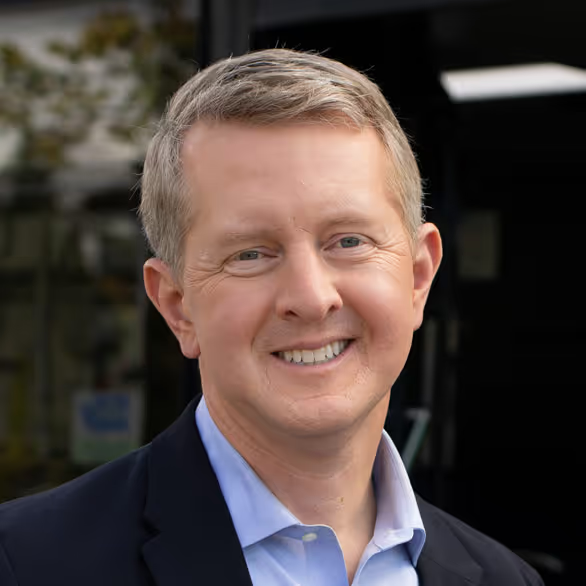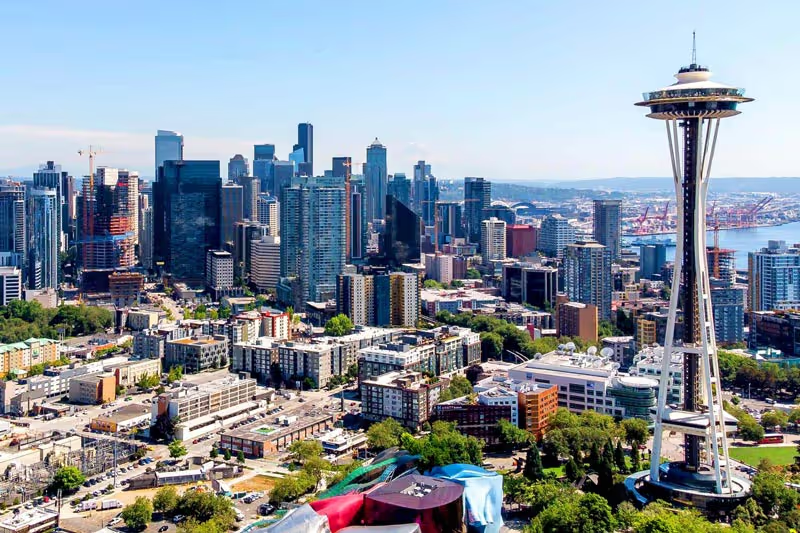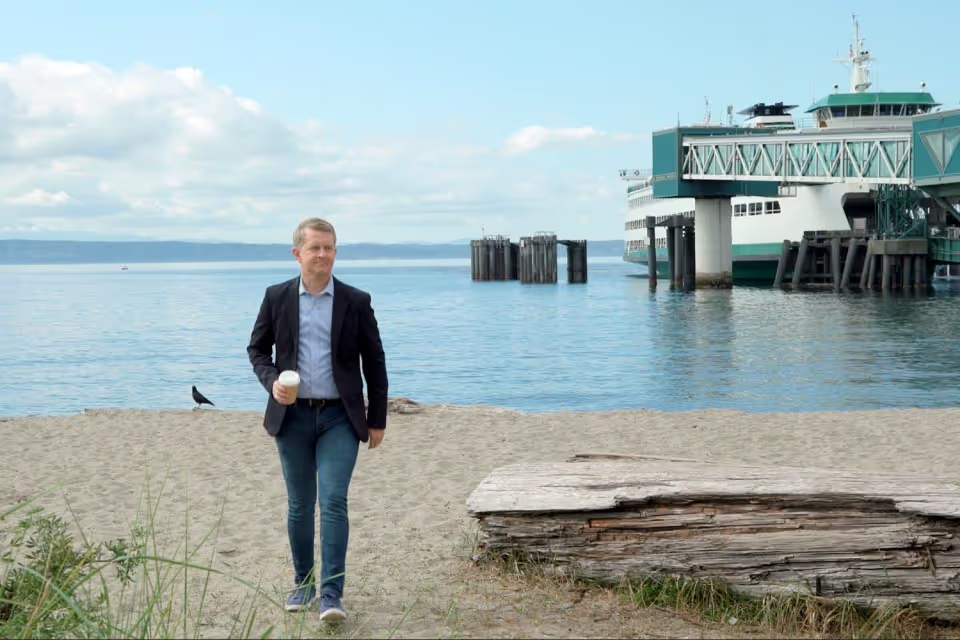Looking back at Earth and ahead to our future
The distances that humanity has traveled have shaped our food, our music, our technology, and our understanding of the world. In 1990, Voyager 1, the farthest human-made object from Earth, snapped the Pale Blue Dot — capturing the world as a tiny speck in the unfathomable vastness of space. Seeing Earth from nearly 4 billion miles away inspired famed astronomer Carl Sagan’s reflections on this perspective.
Our planet is a lonely speck in the great enveloping cosmic dark. In our obscurity, in all this vastness, there is no hint that help will come from elsewhere to save us from ourselves...
There is perhaps no better demonstration of the folly of human conceits than this distant image of our tiny world. To me, it underscores our responsibility to deal more kindly with one another, and to preserve and cherish the pale blue dot, the only home we've ever known.”
— Carl Sagan, Pale Blue Dot: A Vision of the Human Future in Space
Decades later, the urgency of those words is felt as our planet faces a climate crisis with severe environmental, social, and economic consequences.
The Thin Blue Shield
Earth’s atmosphere, a layer of mostly nitrogen (~78%) and oxygen (~21% ), protects life and regulates temperature. Without it, the planet would average around 0°F, far too cold for life as we know it.
Astronaut Ron Garan described seeing the thin atmosphere that protects our planet from the vacuum of space:
“In that moment, I was hit with the sobering realization that that paper-thin layer keeps every living thing on our planet alive.”
But that fragile layer is being warmed by human activities — like burning gas, coal, and oil — trapping extra heat in the atmosphere.
While the problem is global, the solutions start with the choices we make each day. Taking the bus, light rail, riding a bike, or other forms of public transit instead of driving alone is one way each of us can help reduce our individual carbon emissions and protect the “pale blue dot” we all share.
How We Move Matters
Recent data shows that in the United States, transportation is the largest source (28%) of greenhouse gas emissions. Passenger vehicles — the cars and trucks people drive each day — make up 57% of those transportation emissions.
How you travel may be one of the biggest contributors to your personal carbon footprint.
Source: U.S. Environmental Protection Agency (2022 data)
Turning Climate Anxiety into Action
It can be easy to feel helpless in the glut of headlines and data related to climate change and its impacts on the environment. Mental health experts have seen a rise in “climate anxiety” in recent years, especially among younger people. A national study conducted by the Yale Program on Climate Change Communication found that 64% of Americans express concern over climate change, with about 28% saying they feel “very worried” and 11% experiencing debilitating anxiety — feeling nervous, anxious, or on edge about global warming at least several days per week.
Anthony Leiserowitz, a Senior Research Scientist at Yale School of the Environment, says that collective action can help.
“Taking action on climate change is really one of the most powerful ways to combat hopelessness and helplessness,” Leiserowitz said in a 2023 interview. “Go do something— not as an individual, but as part of a group.”
For many people, one of the most affordable, accessible, and impactful ways to act collectively is by using public transportation, which helps reduce greenhouse gas emissions while supporting sustainable communities.
A typical trip on public transit emits 55% fewer greenhouse gas emissions than driving or ride-hailing alone.
Source: TCRP ‘Report 226: An Update on Public Transportation’s Impacts on Greenhouse Gas Emissions’
Small Changes, Big Results
In 2023, people in the U.S. took over 7 billion trips on public transportation — enough trips to fill every seat in Lumen Field 100,000 times. Each person who chooses riding a bus, a train, or light rail over driving a car helps curb climate change.
Cars take up a lot of space — with a large part of urban areas designated to streets and parking. America’s road network — over 4 million miles — could circle Earth about 170 times. The Victoria Transport Policy Institute estimates there are between 105 million and 2 billion parking spaces in the U.S. Each off-street space takes up to 350 square feet, including access lanes and landscaping. If there are about 1 billion spaces in the U.S. — roughly the median of that range — those spaces would cover nearly one-fifth of Washington State’s total land area.
More roads mean more pollution from water run-off and less space for parks, gardens, pedestrian paths, and sustainable land use. Imagine what could replace all of that room designed for cars if we collectively changed how we travel.
Local Action, Lasting Impact
Every bus stop and light rail station in your community shapes how people travel and how your community grows. Research shows that building cities designed for transit over cars reduces sprawl and encourages denser, more walkable communities, reducing energy consumption.
Take a Swift bus, for example. When you see a Swift bus cruising through your community, that bus likely has the capacity to take 100 cars off of your local roads. And there are a lot of Swift buses serving your community, with buses arriving at stations around every 8–10 minutes. Last year, Community Transit reported over 7.8 million boardings, with plenty of room to grow that number if more people take existing transit options.
Source: Based on single-occupancy vehicle assumptions for a 60-foot New Flyer articulated Xcelsior bus.
Regional mass transit like light rail carries even more riders each day. A single light rail car can fit up to 200 people, with each train hauling three to four cars — a capacity of about 800 people per train. With trains arriving at each station around every 10 minutes, that adds up to a lot of potential passengers. Sound Transit reported 123,000 daily Link light rail boardings in January 2025 — more than the city of Everett’s entire population. And that number will continue to grow as light rail expands to serve an even larger area.
Sound Transit’s Link light rail system is fully electric, producing zero tailpipe emissions. It’s also the first major transit system in the country to run on 100% carbon-free electricity, relying on electricity made from wind energy to power its system.
And Community Transit is committed to a clean energy future, with long-range plans to transition to a fully zero-emissions bus fleet by 2044. You may even find yourself aboard a zero-emission model as Community Transit tests different options.
Community Transit’s future plans also include a cleaner, more connected region where more people have easier access to reliable, frequent transit. In addition to Sound Transit’s plans to expand Link light rail further north, Snohomish County will offer more ways to make healthier, more sustainable travel choices.
Small changes can have a big impact. When you ride transit, you're helping the environment and supporting a cleaner, healthier future for all. Want to see the transit effect in action? Ride with us.
Join the Conversation
Stay tuned for upcoming episodes as we continue to explore The Transit Effect and learn about public transit’s role in opportunity, sustainability, accessibility, and beyond. Subscribe and share your thoughts on our YouTube channel.


